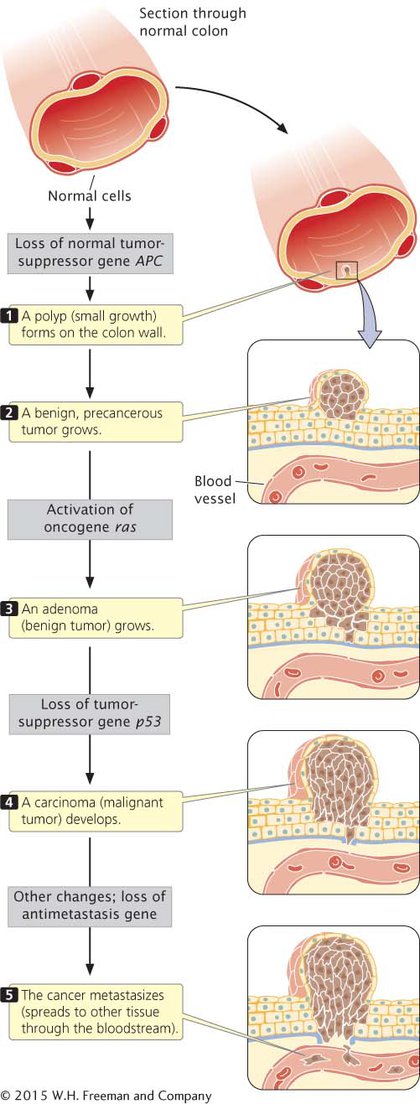16.3 Colorectal Cancer Arises Through the Sequential Mutation of a Number of Genes
Colorectal cancer is an excellent example of how cancer can arise through the accumulation of successive genetic defects. Mutations that contribute to colorectal cancer have been extensively studied.
Colorectal cancers arise in the cells lining the colon and rectum. More than 136,000 new cases of colorectal cancer are diagnosed each year in the United States, where this cancer is responsible for more than 50,000 deaths annually. If detected early, colorectal cancer can be treated successfully; consequently, there has been much interest in identifying the molecular events responsible for the initial stages of colorectal cancer.
Colorectal cancer is thought to originate as benign tumors called adenomatous polyps (Figure 16.8). Initially, these polyps are microscopic, but in time they enlarge, and their cells acquire the abnormal characteristics of cancer cells. In the later stages of the disease, the tumor may invade the muscle layer surrounding the gut and metastasize. The progression of the disease is slow: from 10 to 35 years may be required for a benign tumor to develop into a malignant tumor.

Most cases of colorectal cancer are sporadic, developing in people with no family history of the disease, but a few families display a clear genetic predisposition to it. In one form of hereditary colon cancer, known as familial adenomatous polyposis coli, hundreds or thousands of polyps develop in the colon and rectum; if these polyps are not removed, one or more almost invariably become malignant.
Because polyps and tumors of the colon and rectum can be easily observed and removed with a colonoscope (a fiber-
Mutations of the ras oncogene usually occur later, in larger polyps consisting of cells that have acquired some genetic mutations. The normal ras proto-
Mutations in other genes appear still later in tumor progression; these mutations are rare in polyps but common in malignant cells. About 75% of colorectal cancers have mutations in tumor-
The sequence of steps just outlined is not the only route to colorectal cancer, and the mutations need not occur in the order presented here. However, this sequence is a common pathway by which colon and rectal cells become cancerous.